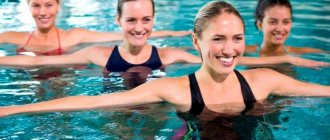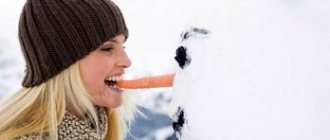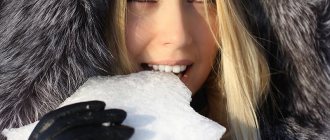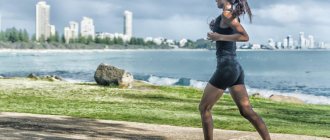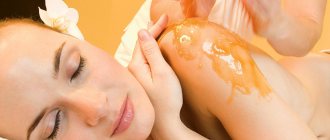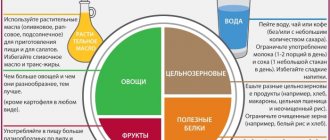Historical injustice
Today, ice skating is available to everyone, but at the beginning of the last century only men practiced this sport. For a woman to appear on the ice was considered bad manners. Only in 1906 did women's singles skating appear. And the fair half of humanity was allowed to compete at the world championships only after 18 years. In connection with this event, a brass band was invited - beautiful skating to wonderful music! But the unexpected happened. In the severe frost, both the musical group and their instruments froze: the trumpets and trombones died down, and only the drums were able to withstand nature. The first women's figure skating competitions took place to its sounds.
Ice skating
The blade of the boot has two ribs - outer and inner. Taking a closer look at the skater's run, you can see that the sliding does not occur strictly perpendicular to the ice, but with a slight inclination - sometimes to the right, sometimes to the left. Learning the technique of sliding movements is very simple. Moving forward has two phases. First, the skater glides on one skate, the body moves forward a little, one leg is in support, and the other is bent at the knee. In this case, groups such as the quadriceps, gastrocnemius and tibia muscles are involved.
Basic terminology of elements in figure skating
- Herringbone is a set of elementary steps for skating. The skate moves at an angle of 30°, and behind the athlete there is a trail in the form of a Christmas tree.
- Cutting - the skater smoothly slides on his left foot, then turns 180° and he skates along the same line, but with his back.
- Mohawk - This light movement allows you to quickly change direction. For example, a skater skates on his right foot and, at some point, changes to the other. There are two types of this element - open and closed. In the first, the free leg is in front of the supporting leg, and in the second, behind.
But, most importantly, the turns. This is more difficult, but it is simply necessary to learn it. How to do this?
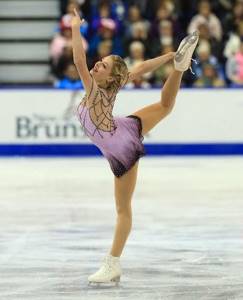
For example, you need to turn right. To do this, you need to bend over a little and turn your shoulders first, and then your torso. In this case, you need to push off with your right foot, placing it on the outer edge, then move your left leg along an arc, but already on the inner edge of the blade.
But how to slow down? To do this, you need to turn 90°, perpendicular to the direction of running. It is important that the knees remain bent, otherwise a fall cannot be avoided.
The second way to burn calories: jogging
You don't need to pay for a gym membership to run. You just need to buy sneakers and sweatpants and choose a convenient time. And there is a place to run everywhere and always.
While running, the muscles of the legs, buttocks, abdominals, back and even shoulders
. Almost all muscles work, while the heart is trained, the lungs are cleansed, the tissues are saturated with oxygen, and excess calories melt away.
When running, do not lean forward, keep your back straight. Your hands should be close to your body while running. If you want to increase the effectiveness of the load, alternate between fast and slow paces and step lengths. It is easier to run on a flat path, but running on an uneven surface with holes, hills, etc. will allow you to burn more calories.
Burning calories while running: up to 750 kcal per hour
Virtuoso number
Once you understand how simple movements are performed, you can take a step forward and practice more complex elements.
In 1772, Robert Jones, a lieutenant of the English artillery and a great fan of ice skating, composed the famous “Treatise on Ice Skating.” It described the elements that were famous at that time - spirals and rotations. For a very long time this book was the best guide in this sport. But at one fine moment, Ulrich Salchow, Alois Lutz, Werner Rittberger and Axel Paulsen invented new elements, which are now called the school, or the alphabet of figure skating.
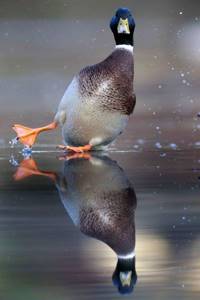
Here are some of them:
- The Toe Loop is a fairly simple element, so professionals often perform it as the second jump in a cascade. But for those who are new to skating, it's not so easy. During the jump, you need to push off with your free foot from the ice surface and fly forward.
- Salchov was invented by Swedish figure skater Ulrich Salchow, who was a 10-time world champion. This movement has a characteristic feature by which it is easy to distinguish it from others. The element begins with the release of the free leg and ends with a flight. Often, skaters, when performing a Salchow, make the mistake of not immediately jumping into the air, but only turning 90 degrees.
- Rittberger (Loop) - also a jump, but without throwing out the leg and hitting the teeth of the skate on the ice surface. The athlete pushes off with his supporting leg and lands on it. This movement is performed on the right skate, the supporting leg remains bent. This is not easy to do, so often the skater stands on the ice with his free foot, and the jump begins with both feet.
- Lutz - the element begins with a long drive backwards on the left foot. It is very important, before starting the jump, you need to lean forward a little, raise your right leg, then hit the ice with a tooth and lower yourself onto the other leg.
- Axel is the only jump performed from the leading foot, and not from the free foot. The skater rides, jumps and, already in flight, makes a turn, after which he lands safely.
Around its axis
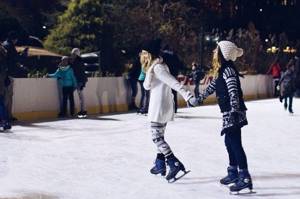
Another movement that is no less exciting and impressive is rotation. Here, too, there are several types:
- simple - elements performed on one leg to the right or left.
- combined - when rotating, you need to change your leg and position.
- Cog - rotational rotations while standing: the free leg is bent in front of the supporting leg, and the arms are fastened on the chest. The skater, lowering his free leg down, straightens his arms up. In addition, the speed of the rotational movements becomes more and more, and a very striking trick element is obtained.
- The top is similar to a cog, but the movements occur in a sitting position: the leg on which the skater rests is bent, and the free leg is extended forward. The hands are parallel to the ice.
All or nothing
It is important to overcome your fear when skating for the first time. Set a goal, believe in yourself and go ahead! Squat, spring on your feet, and then the ice will seem more stable. And when you feel confident on skates, you can try to master more complex movements. To start, do a half-turn jump: you need to ride on your left foot, and then jump over to your right. Absolutely anyone can do this. The main thing is to avoid making the most terrible mistake of beginners - falling headfirst. It is very dangerous. To avoid such a fall, it is necessary to carry out training at home: correct grouping and falling to the floor. And when you go out on the ice, you need to keep your body slightly tilted forward.
The third way to burn calories: jumping rope
Jumping rope is a very powerful and effective warm-up, favored by boxers. Almost all muscle groups work - they just burn. And how the pulse quickens! The shorter the rope, the more difficult it is to jump and the more calories are spent. If you don’t have a jump rope, you can jump without it, performing the same movements as when jumping rope. By the way, jumping rope is an excellent remedy for cellulite.
, which, of course, should be adopted by all women.
To increase the load, change the pace from fast to slow and vice versa. Jump on two legs, then on one – first with your left, then with your right. You can run while jumping rope.
Burning calories with a jump rope: up to 680 kcal per hour
Spectacle or sport?
At first, after exercising on ice, your whole body will ache, and you will feel discomfort in your ankle joints. But this is not surprising. After all, when skating, all muscle groups are involved, but the main part of the load falls on the legs. Therefore, in addition to being interesting and exciting fun, it is also a sport that helps you maintain good athletic shape and a slim figure. How many calories are burned when skating? Just an hour on ice, and 400 kcal was gone. Figure skating also develops coordination of movements and perfectly increases the activity of the respiratory and cardiovascular systems. And the air! It seems to be ringing from frost. And there is much more oxygen in it in winter than in summer.
And remember, you need to have fun riding!
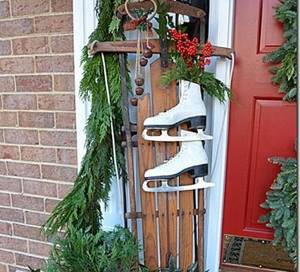
Maximum effect
Walking and skiing technique is only one of the components of success. In order for skiing to really contribute to weight loss, you need to follow other rules, completely simple, but important.
First of all, equipment should help your training, not hinder it. Clothes should be light, comfortable, but warm and comfortable. It's good to use thermal underwear. When choosing skis, consult with sales consultants: if they are too long, short, heavy or light, you will not get any benefit from your training. The best choice is skis in combination with boots: this will ensure the reliability of the bindings, although it can be expensive. True, you can rent equipment if possible, but it depends on your luck.
Mustard wraps for weight loss and cellulite
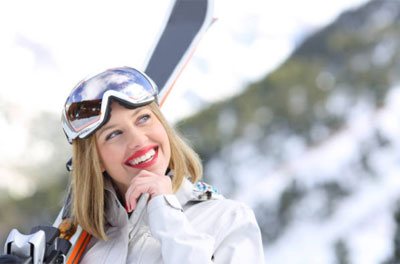
Before training, be sure to do a 10-minute warm-up. This will allow the cells to prepare to burn fat, and the joints and ligaments to avoid injury.
You can start with two half-hour workouts a week - walking or running about 5 km in the snow. When you can do this relatively easily, add another workout and gradually increase the time to 2 hours and the distance to 12 km. If you have recently learned to ski, you should not climb too high, as beginners sometimes do when they get to a ski resort or sports center. Due to the unusual height, shortness of breath and headache may begin, and then there will be no time to lose weight.
Before training, as well as during it, you need to drink clean water: in winter, dehydration can result in no less serious problems than in summer - the body should not suffer from thirst.
But there is, as with any training, better 1.5 hours “before”, and 1.5-2 hours “after”. But you can drink hot tea (green, red, herbal, weak black) without sugar as much as you want: you will warm up and “wash away” toxins.
Best skates
Leather or plastic, which one should you prefer?
A few years ago it would have been plastic - then very fashionable, but rather uncomfortable shoes. Today, the classics are regaining their position again. Leather boots with long laces securely fix the ankle and foot. In addition, they have special warm fleece covers to prevent your feet from freezing. Place the covers directly on the shoes. You need to buy shoes at least half a size larger to wear them with wool socks.
It doesn’t matter which skates you choose, the main thing is that they are comfortable, otherwise skating will not be a pleasure, but a burden.
About equipment and technology
Particular attention must be paid to preparation and equipment. The athlete’s comfort and results will depend on this. Equipment is divided into 2 points:
Choosing skates is the most crucial moment. You can rent them or purchase them yourself. Main requirements for boots:
- appropriate size;
- comfortable fit on the leg;
- the heel is clearly fixed in place;
- the leg does not dangle, and there is no extra space left in the boot;
- The material of the boots is soft and natural.
If you plan regular training, it is better to get personal skates. You don't have to spend too much money for this. Such shoes will always be more comfortable. It's also better from a hygiene point of view.
Clothes do not have to be purchased at a sports store. The main thing is that it is comfortable:
- warm, but preferably breathable;
- lightweight so as not to overtighten or hamper movement;
- without unnecessary elements that will interfere with maintaining balance.
How to store?
There are two types of covers - hard and soft. The first ones are needed when leaving the ice, and the second ones are needed to protect the skates throughout the year. Soft cases are made from fabric that absorbs moisture well and protects the blades from rust. There is another way to protect the runners during the off-season - varnish the heel. However, this is a less effective method: the sole may begin to crack and eventually fall apart. Therefore, the best solution would be to lubricate the heel with a special solution, and the runners with technical petroleum jelly or grease, which are sold in shoe shops. Until the next season, skates must be stored in a dry, dark place.
<<
The fourth way to burn calories: spinning a hula hoop
Hoop exercises seem very easy and therefore not effective for burning calories, but this is not true. The site has an entire section dedicated to effective hula hoop exercises. This type of physical activity is good because the simulator itself is cheap, takes up little space, and training with it brings pleasure to many people. Beyoncé, for example, has repeatedly said that hula hoop exercises help her stay in shape and maintain a thin waist.
You need to choose a hoop of the appropriate size. The right size hoop should reach your chest when you place it on the floor in front of you.
To burn calories with a hula hoop, you just need to spin it. But to increase the load, you need to change the pace. You can also perform various exercises with a hoop that you will find. A light hoop is more difficult to rotate, so it burns more calories than when exercising with a heavy hoop.
Calorie burning with hoop: 400 to 600 kcal per hour depending on intensity, type of hoop and exercise options

